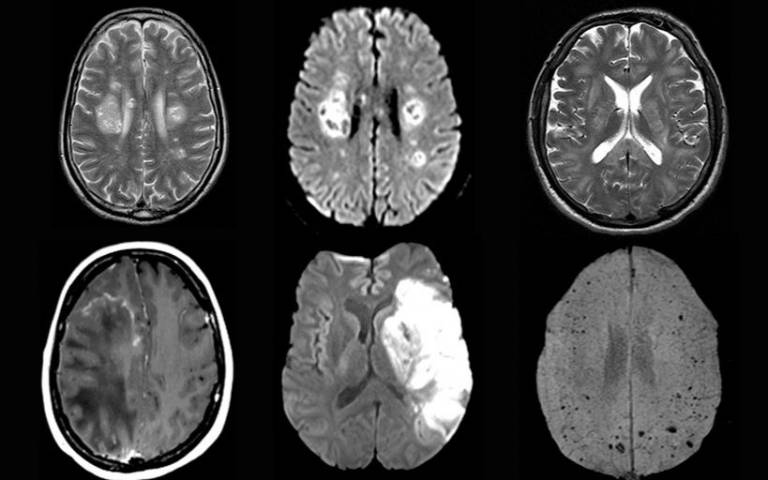
The coronavirus affects not only airways, kidneys, blood vessels and intestines. British researchers from University College London and the University of Liverpool have also noted various brain damage in several studies of COVID-19 patients.
These occur not only in people with a grave corona disease progression or in elderly people who already have certain conditions. Young people and people with mild disease progression can also suffer serious neurological damage. These include delirium, encephalitis, stroke and inflammation of the nerves. Some of these neurological complications occur at the onset of the disease, others only weeks later.
The research team identified a normally rare and sometimes fatal inflammatory disease, known as ADEM (Acute disseminated encephalomyelitis). This seems to be increasing in frequency as a result of the pandemic. There was also a group of patients who presented with no respiratory problems. Among these patients, the neurological disorder was the first and most significant indication of COVID-19.
Remains to be seen if corona leads to a brain damage epidemic
“We’ve identified more people with neurological conditions like encephalitis than we anticipated. And this may not always correlate with the severity of respiratory symptoms,” says senior author of the study, Dr. Michael Zandi of UCL Queen Square Institute of Neurology and the University College London Hospitals. “We have to be vigilant and watch out for these complications in people who have COVID-19. It remains to be seen whether the pandemic will lead to an epidemic of extensive brain damage. It may be similar to the outbreak of encephalitis lethargica in the 1920s and 1930s after the 1918 flu pandemic.”
Inflammation and failure of peripheral nerves or spinal cord
Researchers from the two universities examined a total of more than 900 cases of COVID-19 patients aged 16-85 years. Of this group, some developed transient encephalopathy and suffered from delirium. Others had encephalitis (inflammation of the brain), or suffered strokes. In addition, the scientists also diagnosed inflammation and failure of the peripheral nerves or spinal cord. They also observed other symptoms of impaired nerve function and nerve damage such as Guillain-Barré syndrome. This is a temporary paralysis caused by inflammation of the nerves.
A study by the University College London team found acute disseminated encephalomyelitis (ADEM) in nine out of twelve people with encephalitis. This disease is usually extremely rare and occurs almost exclusively in children. It can be caused by viral infections. Ordinarily, doctors diagnose about one adult patient with ADEM per month. However, over the course of their studies, this number has increased to at least one per week. “This increase is alarming.”
Virus has not been detected in cerebrospinal fluid
However, the coronavirus could not be detected in the cerebrospinal fluid of one of the patients tested. The scientists, therefore, assume that the virus does not attack the brain itself directly. This suggests that some of the neurological complications of COVID-19 may be due not so much to the virus itself but perhaps more to the body’s own immune response. Further research is needed so as to ascertain whether these neurological complications are caused by the coronavirus itself or indirectly by the compromised immune system.
“Given that the disease has only been around for a few months, we perhaps still don’t know what long-term damage COVID-19 may cause,” says Dr. Ross Paterson of the UCL Queen Square Institute of Neurology, one of the lead authors of the study, which was published in Brain magazine. “Doctors need to be aware of the potential neurological effects, because early diagnosis can improve results for the patient. People recovering from the virus should seek professional advice if neurological symptoms become apparent.”





